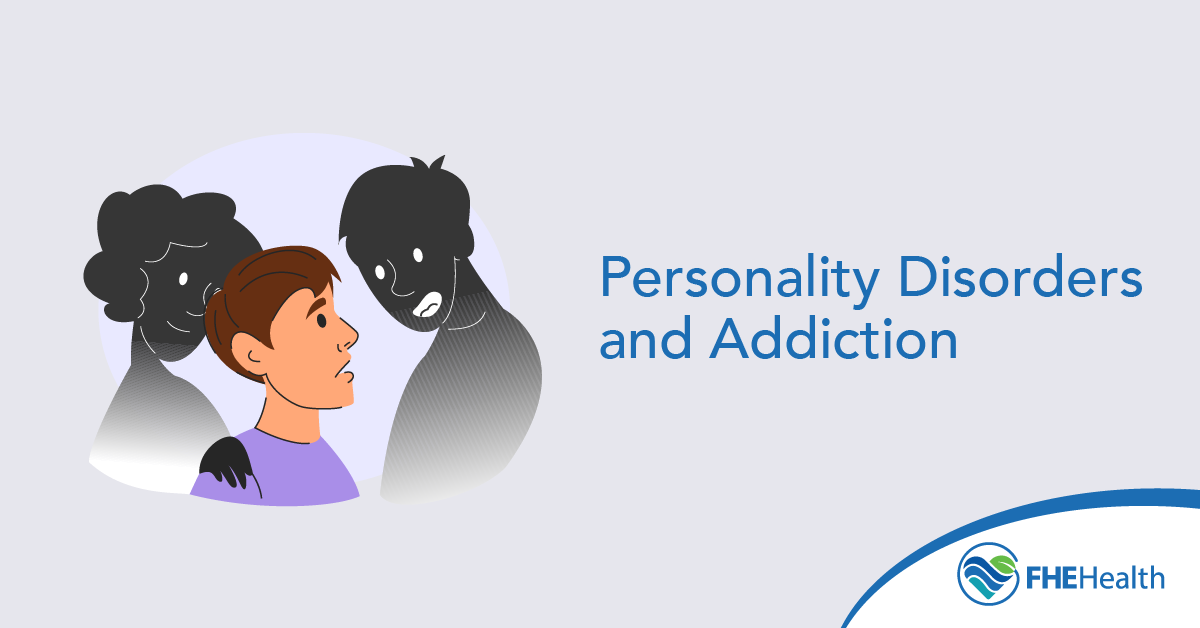
A significant number of people have personality disorders. According to information from the Cleveland Clinic, these conditions affect around 9% of all adults in the United States. Additionally, as many as one in three people is impacted by comorbid personality disorders, meaning they develop two or more disorders at the same time. Another concerning statistic is the number of people with personality disorders who also have a substance abuse problem. The co-occurrence of personality disorders and substance use is high, with alcohol, cannabis, methamphetamines and opioids being the most common substances abused.
What Are Personality Disorders?
A personality disorder is a mental health condition in which a person’s way of thinking and relating to others differs from what’s considered normal. Generally, these behaviors are unhealthy, and people with personality disorders are usually inflexible and have difficulties with interpersonal relationships at home and work.
The Diagnostic and Statistical Manual of Mental Disorders (DSM) has defined 10 types of personality disorders. These are grouped into three clusters related to their severity.
Cluster A — Odd and Eccentric
This cluster includes behaviors largely considered unusual, strange or weird. It consists of three disorders:
- Paranoid personality disorder. PPD is a condition where the affected person is suspicious and distrustful of others. They don’t trust people and have strong beliefs that others mean them harm.
- Schizotypal personality disorder. This disorder includes odd, unusual and eccentric thoughts and behaviors. Sufferers may experience difficulty forming relationships and have a distorted view of reality, often believing in superstitions and fantasies.
- Schizoid personality disorder. Although they’re in touch with reality, a person with a schizoid disorder prefers to be alone. They have little interest in forming relationships with others and don’t make emotional connections easily.
Cluster B — Dramatic and Emotional
Individuals suffering from these personality disorders exhibit strong emotions and erratic behavior. These are the most commonly diagnosed disorders:
- Antisocial personality disorder. People with ASPD are manipulative and impulsive. They willingly lie and deceive to get what they want and have no remorse.
- Narcissistic personality disorder. A narcissist has no regard for the feelings of others and believes they’re unique, chosen and more important than other people.
- Borderline personality disorder. Someone with a BPD disorder is impulsive and can’t manage their emotions. They experience mood swings and can be aggressive.
- Histrionic personality disorder. This disorder is characterized by attention-seeking behavior. The person appears to be outgoing and happy, but they’re insecure.
Cluster C — Anxious and Fearful
People with these disorders often demonstrate anxiety and fear:
- Obsessive-compulsive personality disorder. Individuals with this personality disorder are driven to minutely control their lives. They’re perfectionists and obsessed with rules, lists and details. (OCPD differs from obsessive-compulsive anxiety disorder.)
- Dependent personality disorder. This disorder is characterized by an unhealthy dependence on others and an inability to make decisions without input from those close to them.
- Avoidant personality disorder. Individuals with this disorder tend to avoid people because they fear rejection. They feel they don’t match up to others and may withdraw from society.
How Personality Disorders Interact With Substance Use
Individuals living with personality disorders often recognize they’re different and feel significant pressure to conform. These disorders mainly develop in the period between the early teens and adulthood. It’s during this period that young adults start experimenting with alcohol, vaping and drugs. Contributing factors may include physical and emotional abuse as a child, trauma and heredity factors.
Drugs and alcohol use offer a way for people with personality disorders to try to fit in. This particularly applies to disorders that encourage risk-taking and excitement. For example, a high percentage of people with ASPD develop a substance use disorder. Similarly, there’s a strong link between BPD and addiction.
Common Dual Diagnosis Personality Disorder and Substance Use Combinations
Disordered personalities may gravitate toward drugs and alcohol as coping mechanisms. This form of self-medication is used to help ease feelings of inadequacy and to support risk-taking behavior. Common combinations of personality disorders and SUD include:
- BPD and alcohol. The impulsive use of alcohol to help cope with intense emotions.
- Antisocial personality disorder and addiction. High-risk behavior leading to excessive alcohol consumption and experimental drug use.
- Paranoid personality and substance abuse. The use of drugs and alcohol to manage symptoms of paranoia.
- Narcissism and drugs. Because they have overwhelming feelings of superiority, narcissists often believe they can control their drug and alcohol use.
- Histrionics and substance abuse. People with this form of disorder are susceptible to social pressure to use drugs or alcohol.
Challenges in the Treatment and Diagnosis of Comorbid Personality Disorders
Diagnosing a personality disorder is a complex process, and typically, a psychologist or therapist assesses the individual over a period of time. Having a concurrent substance abuse problem makes diagnosis more challenging because the symptoms of the two conditions can overlap. A comorbid personality disorder is another factor that complicates effective diagnosis. Depending on an individual’s emotional state and the effects of their substance abuse, their behavior and thinking can change from one session to the next. This makes diagnosis more difficult. Also, the presented problem is often related to anxiety or depression, which masks underlying substance abuse issues.
Integrated Approaches to Recovery
Treatment protocols should be tailored to the individual’s specific needs. It’s often best to treat substance abuse first while using therapy to help deal with the psychological symptoms of the SUD and the personality disorder. The first step in dealing with substance abuse is a detox program, followed by individual and group therapy.
Long-Term Strategies for Managing Both Conditions
It takes time and patience to alleviate personality disorders that may have developed over the years. Treatment includes therapy and the use of certain medications. Methods may include dialectical behavior therapy to help develop skills to cope with emotions and distress. Other treatments known to help include neurostimulation therapy and cognitive brain training. A physician may prescribe medications to help stabilize mood, such as antidepressants and antipsychotics. Long-term group therapy is an important element of treatment and healing for individuals with personality disorders.
Finding Help at FHE Health
If you or a loved one has comorbid personality and substance abuse disorders, call us at FHE Health. We’re open 24-7 every day of the year. Our clinical and psychiatric teams are here to help and can advise you on the best treatment plan to relieve your symptoms.






